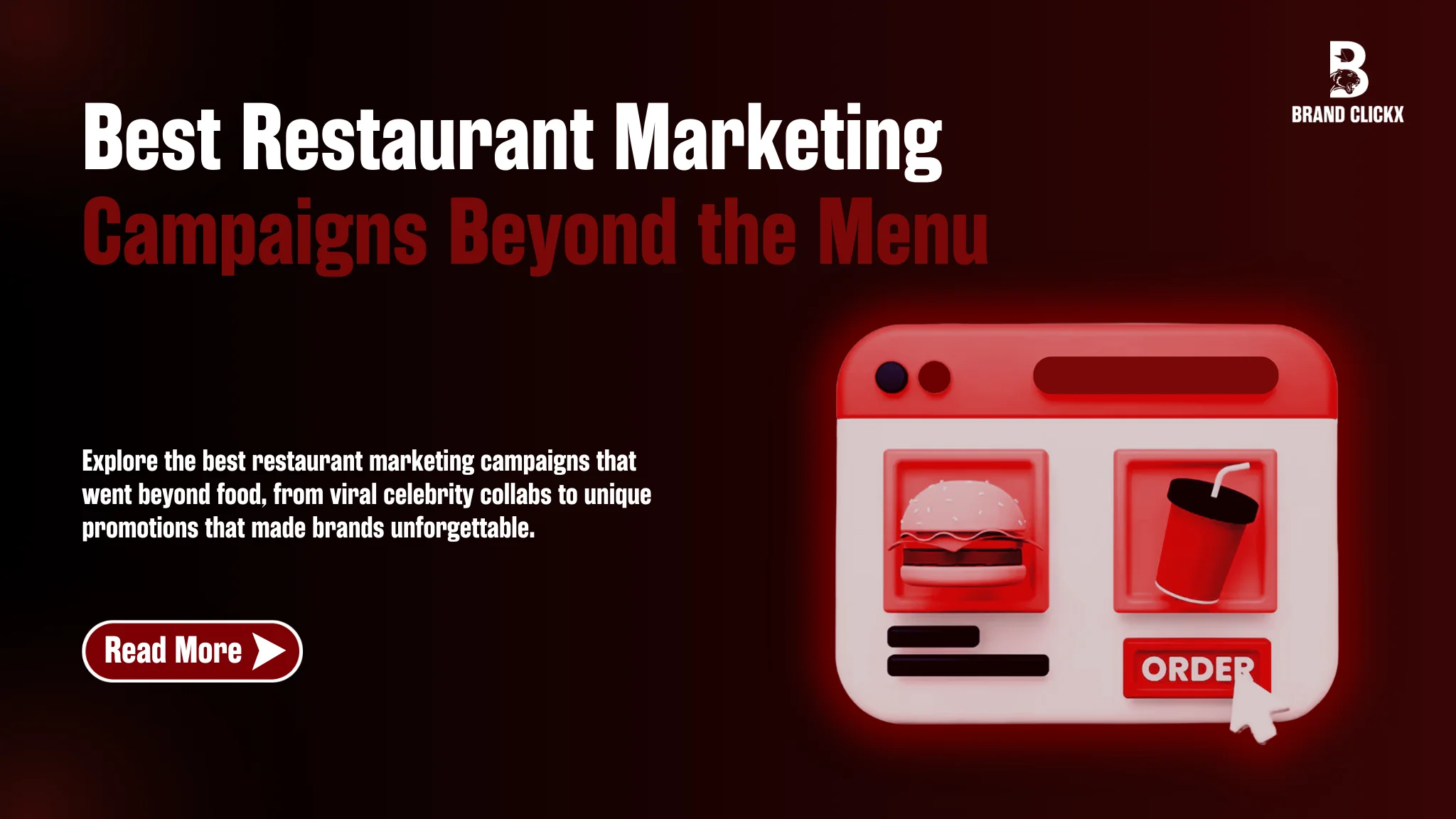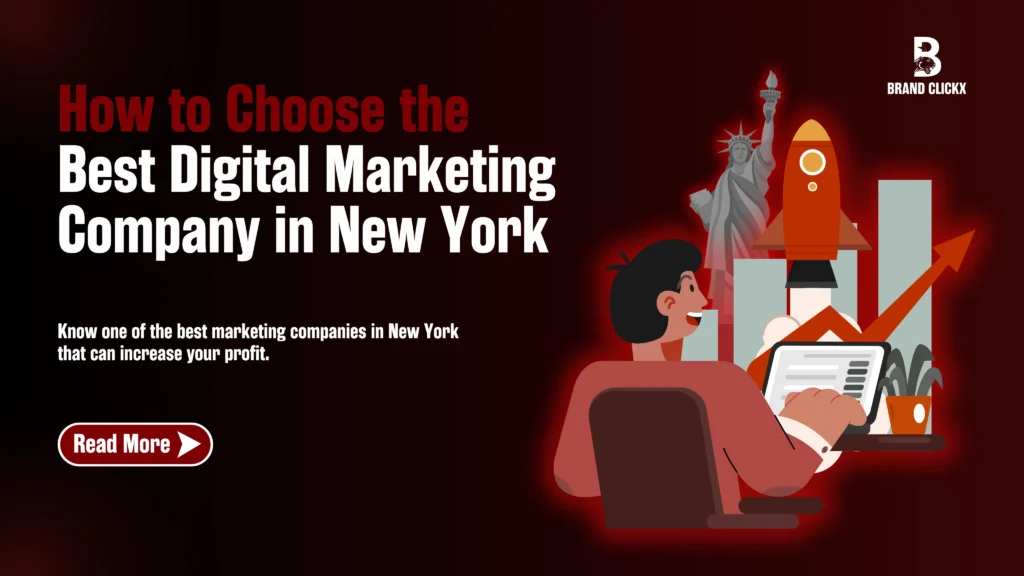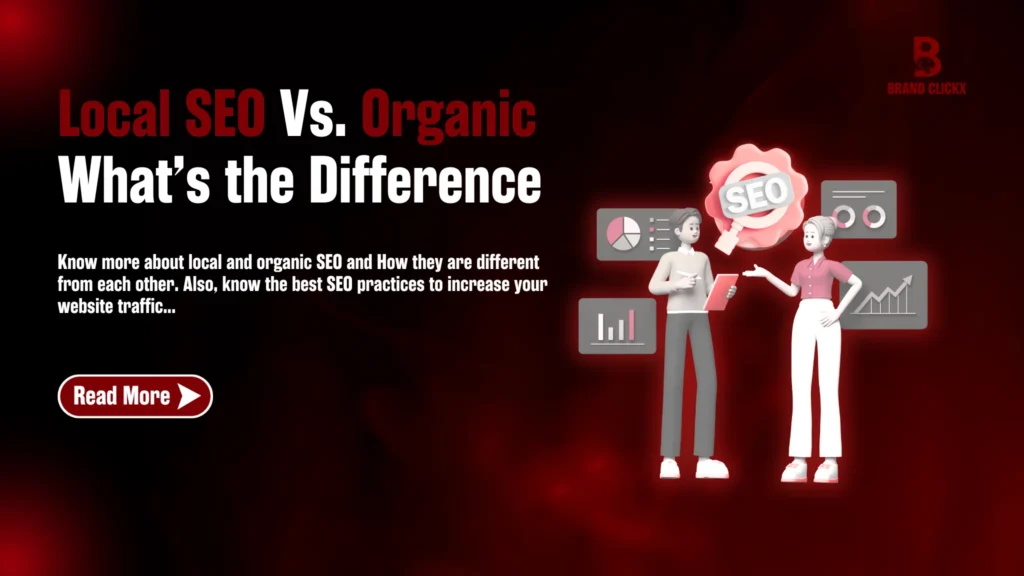Fast food is no longer just about taste. It is about flair, creativity, and creating a connection with the audience. The most iconic brands understand that the real impact lies not only in the product but in the story built around it.
Over the years, major fast-food chains have challenged traditional marketing and launched campaigns that break the mold.
In this article, we highlight seven brilliant campaigns that show how fast-food marketing can be clever, emotional, bold, and even socially impactful. One brand even went as far as fixing roads to protect their product.
These are not just advertisements. They are cultural moments that reshaped brand loyalty and left a lasting impression.
Ready to explore how fast food evolved from drive-thru deals to digital buzz? Let’s have a look at some of the boldest marketing moves in the industry.
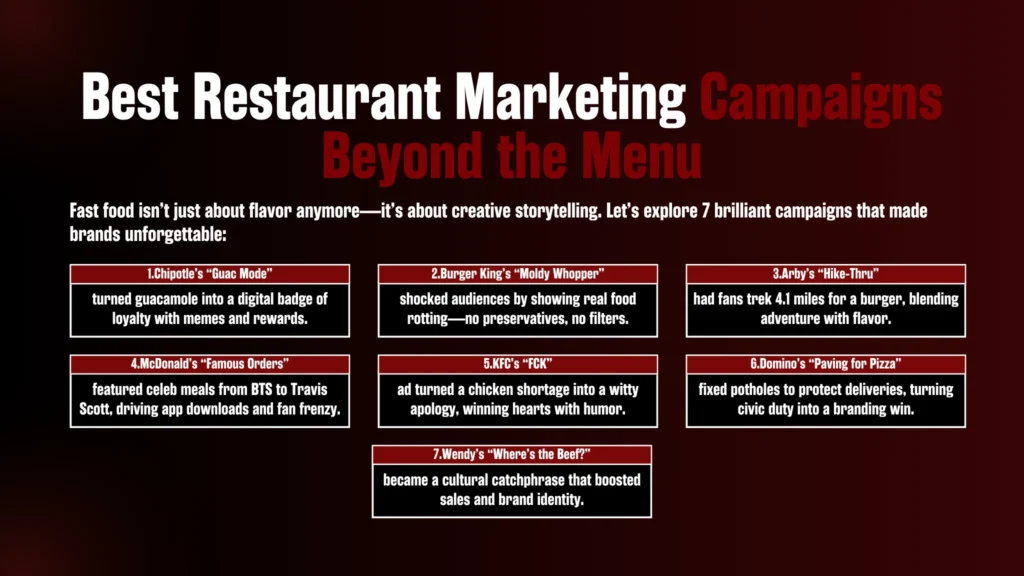
7 Best Restaurant Marketing Campaigns
1. Chipotle’s “Guac Mode” Campaign
Chipotle knew one thing for sure: people love guac. So, during the Super Bowl, they didn’t just promote guacamole; they made it a whole mood. “Go guac mode” became a fun rallying cry, turning extra guac into a lifestyle choice.
With memes, influencers, and a playful tone, the brand turned a simple topping into a social moment. They also added a rewards program. Customers who joined on a certain date unlocked Guac Mode, which meant access to free extras like Guac throughout the year.
The campaign blended humour with value, and the digital promo (featuring an app screen inviting users to join Guac Mode) made it even more interactive. The result? More burritos, more buzz, and a lot more green.

2. Burger King’s “Moldy Whopper” Campaign
When Burger King dropped the “Moldy Whopper” campaign, it didn’t just break the rules of fast food advertising; it burned the old playbook.
Instead of showing a picture-perfect, mouth-watering burger, they zoomed in on a Whopper slowly rotting over 34 days. Sounds gross, right?
But that was the point. Burger King wanted to prove their food was real, free from artificial preservatives, colors, and fake stuff that makes burgers look the same forever.
By showing their Whopper growing mold, they told the world, “Hey, this is what real food does.” It was shocking, honest, and weirdly refreshing.
The campaign stirred massive buzz, earned millions in media value, and even won top creative awards. More importantly, it helped Burger King stand apart in a world where most fast food still hides behind filters and fluff.
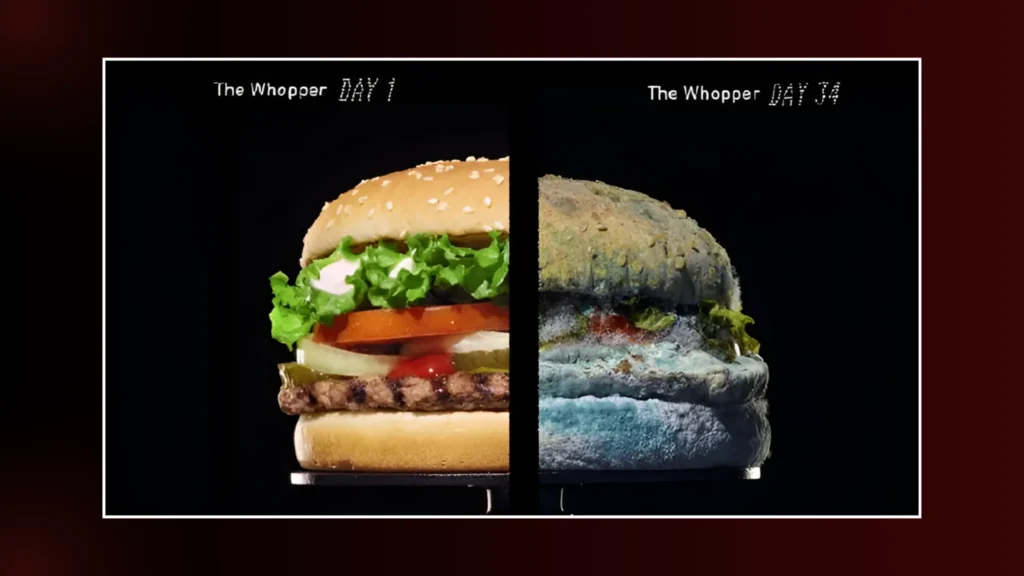
3. Arby’s “Hike-Thru” campaign
Arby’s really flipped the script with their “Hike-Thru” campaign. It wasn’t just about launching a new burger; it was about creating an unforgettable experience.
To promote their Big Game Burger (a bold blend of venison, elk, and beef), they set up a pop-up restaurant 10,731 feet up in the Colorado Rockies.
But here’s the twist: you had to hike 4.1 miles through rugged trails to get there. Yep, no drive-thru, just sweat, elevation, and adventure.
Hikers who made the trek were rewarded with a free Big Game Burger and could grab limited-edition merch to remember the journey. The event ran for just one day, but it exploded across media and social platforms.
People weren’t just eating a burger they were part of a story. By mixing outdoor culture, scarcity, and physical effort, Arby’s created something far bigger than a menu item.

4. McDonald’s “Famous Orders”
With the “Famous Orders” campaign, McDonald teamed up with cultural icons like Travis Scott, BTS, and Saweetie to serve fans their personal go-to meals.
The idea was simple yet genius: “Everyone has a McDonald’s order even your favorite celeb.” And with that, a global movement was born.
The Travis Scott Meal dropped first and caused literal chaos some stores ran out of ingredients, and “Cactus Jack sent me” became the hottest phrase in drive-thrus.

Then came BTS, who turned a chicken nugget meal into a worldwide celebration, complete with Korean sauces and a 250% spike in app downloads. Saweetie followed with a remix-ready meal and custom sauce branding, injecting flavor, fun, and flexibility into the whole idea.
With record-breaking media impressions and millions in incremental revenue, “Famous Orders” became more than a marketing hit; it set the standard for celebrity collaborations in fast food.
5. KFC’s “FCK”
When KFC ran out of chicken in the UK, yes, really, you’d expect a PR nightmare. Instead of hiding behind corporate speech, KFC leaned into the disaster with honesty and humor.
Their legendary “FCK” ad, a rearranged KFC bucket spelling out the not-so-subtle oops, turned a crisis into a branding win.
With a full-page print ad in The Sun and Metro, the fast-food giant offered a heartfelt apology wrapped in cheeky wit: “A chicken restaurant without any chicken. It’s not ideal.” The self-aware tone struck the perfect balance between regret and realness.
The result? Viral applause. People shared it, laughed with it, and, most importantly, trusted the brand even more. Sentiment improved, and the ad became a masterclass in crisis communication.
No wonder it swept industry awards and is still studied as a textbook example of how to say “sorry” the right way.

You Might Like Reading: Social Media Crisis Management 6 Best Practices
6. Domino’s “Paving for Pizza”
When was the last time a brand fixed your street? That’s exactly what Domino’s did with its brilliant “Paving for Pizza” campaign because nothing ruins a fresh, hot pizza like a giant pothole.
Launched in 2018, this campaign turned a real delivery issue, damaged pizzas from bumpy roads, into a national movement. Instead of just apologizing, Domino’s grabbed some asphalt and got to work.
They started funding pothole repairs, one town at a time, with an initial $100K budget and grants up to $5,000. Towns could apply, and customers could nominate their cities through a fun microsite, pavingforpizza.com. The community response was massive.
And they didn’t stop at paving. They branded the fixed roads with their logo and the bold message: “Oh yes we did.” Talk about turning infrastructure into advertising.
With over 137,000 nominations from all 50 states, more than 20 cities paved, and features in USA Today and Bloomberg, the buzz was real. Social media lit up with more than 50,000 mentions, and Domino’s positioned itself not just as a pizza company but as a community ally. They even expanded the campaign to snow removal with “Plowing for Pizza.”
This wasn’t just smart marketing. It was pizza-powered civic action. By solving a common problem creatively, Domino’s proved that being helpful is the new branding.

7. Wendy’s “Where’s the Beef?”
Back in 1984, Wendy’s wasn’t the fast-food giant it is today. Stuck in the shadows of McDonald’s and Burger King, it needed a bold move. The answer? A hilarious and unforgettable question: “Where’s the beef?”
Wendy’s burgers had something their rivals didn’t: more actual beef and less bun fluff. To prove it, they teamed up with the advertising agency Dancer Fitzgerald Sample to launch a campaign that poked fun at the competition’s oversized buns hiding sad little patties.
The now-iconic TV spot featured three older women examining a burger from a fake chain called “Home of the Big Bun.” When they lifted the bun and found a tiny patty, Clara Peller delivered the legendary line with dry, unimpressed sass: “Where’s the beef?”
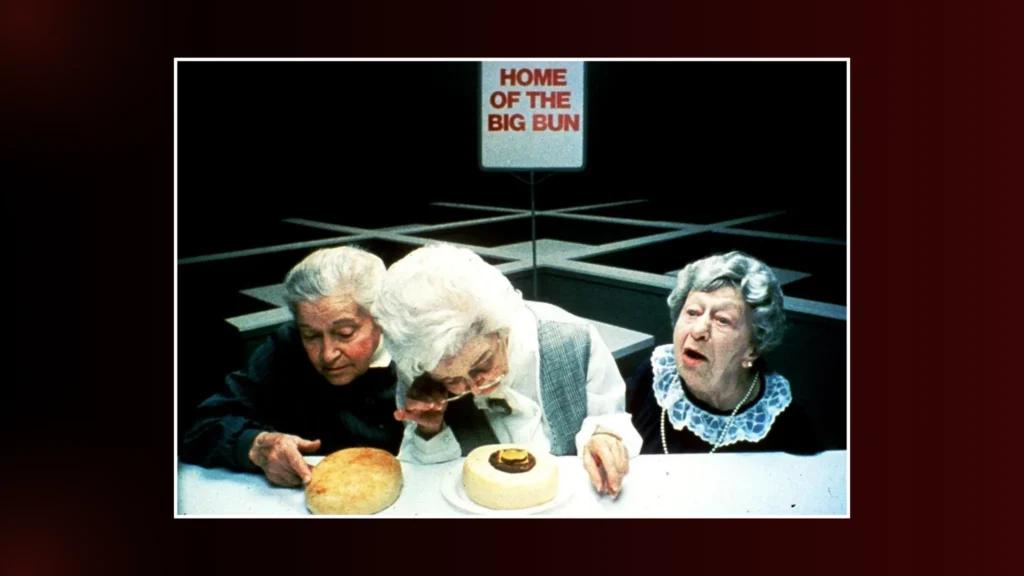
That one line did more than sell burgers. It exploded into pop culture. From TV shows to political debates, people everywhere were asking “Where’s the beef?” whenever something felt empty or overhyped. Clara Peller became a star, and Wendy’s became a symbol of real value and no-nonsense food.
And the numbers? Incredible. Wendy’s saw a 31 percent spike in sales, hitting $945 million in revenue by 1985. Their message about offering real meat instead of marketing fluff resonated hard. In a world tired of exaggerated claims, Wendy’s offered something authentic and refreshing.
The campaign is still studied today because it nailed the basics:
- A clear message that called out the competition.
- Humor and relatability that stuck with people.
- A phrase that broke out of ads and into everyday talk.
Wendy’s didn’t just sell more burgers. It changed the game with one simple question.
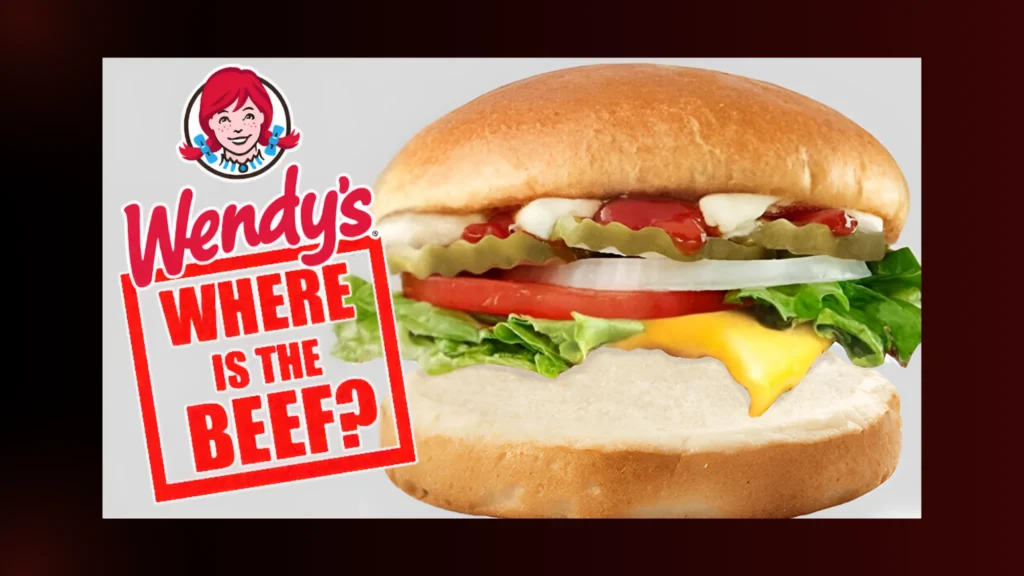
Consider Blog Post:
- 11 Tips for Restaurant Social Media Marketing That Work
- Top 10 ways to use TikTok marketing for restaurants
- Instagram Marketing for Restaurants: How to Turn Followers into Diners
FAQs
1. What is the best marketing strategy for restaurants?
Honestly, there’s no one-size-fits-all answer but the best strategy is one that makes people feel connected to your place. Think of it like this: people don’t just come for the food; they come for the vibe, story, and experience.
A great strategy mixes a few things:
- Good food pics on social media (mouthwatering ones!)
- Specials or loyalty programs that give people a reason to come back
- Local community involvement – like sponsoring events or donating leftovers
- And, most importantly, authenticity. Be real. Show the humans behind the counter.
If your food’s good and your story feels real, people will keep coming.
2. What is a food marketing campaign?
It’s basically when a restaurant or food brand runs a cool, focused promotion to grab attention like when a burger joint drops a limited-edition menu item and pairs it with funny TikToks, catchy slogans, or influencer shout-outs.
A good campaign does one thing really well: it makes people talk and, ideally, eat! Think of campaigns like McDonald’s “Famous Orders” or Domino’s “Paving for Pizza.” It’s marketing with flavor.
3. What are the 4 P’s of marketing for restaurants?
The 4 P’s are like the secret recipe of marketing. Here’s the restaurant-style breakdown:
- Product: That’s your food, obviously! But also your ambience, service, and overall experience.
- Price: Are you a casual lunch spot or a fancy dinner destination? Your pricing should match your vibe.
- Place: Where are you located, and how easy is it for people to find/order from you (think delivery, Google Maps, social media)?
- Promotion: How are you spreading the word? Ads, deals, social media, events this is where creativity kicks in.
4. How do I attract people to my restaurant?
Start by thinking: what would make you want to check out a new place?
- Great photos on Instagram (seriously, don’t underestimate this)
- Good reviews and strong word-of-mouth so encourage happy customers to post and tag you
- Unique offerings, maybe a themed night, secret menu, or a killer dessert
- Consistency in providing good food and warm service keep people coming back
- And don’t forget the power of community. Host events, partner with local businesses, show up for causes, it all builds love.
If you show heart and serve up something special, customers won’t just come once, they’ll become regulars.
Conclusion
From guacamole moods to pothole repairs and viral celeb meals, these campaigns prove that restaurant marketing today is about so much more than food, it’s about feeling.
The best brands don’t just sell burgers or burritos; they create moments, spark conversations, and build real connections with their audience.
No matter if you’re a small local diner or a rising fast-food chain, the takeaway is clear: be bold, be authentic, and make your audience part of your story.
Want to launch your own buzz-worthy campaign?
Let Brand ClickX help you turn your restaurant into the next big thing. Start your free trial with us today and see what smart marketing can do for your brand.

